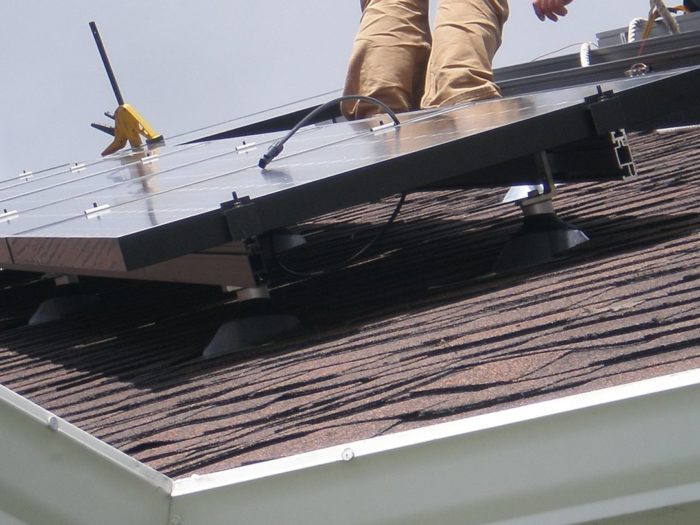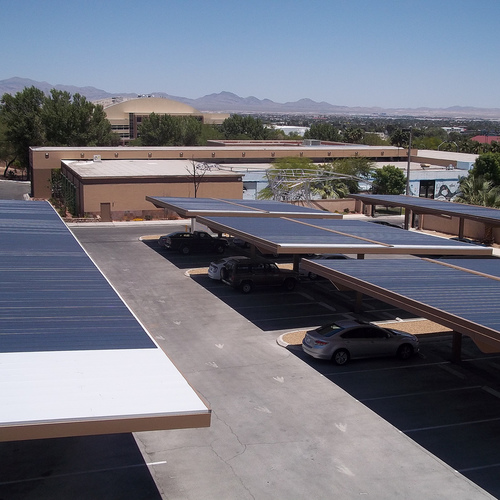
Less than a month after regulators voted to adopt a new and innovative approach to calculating the value of the electricity produced by owners of residential PV systems, Minnesota’s largest electric utility has formally asked the state’s Public Utilities Commission to back up and try again.
Under the plan approved on April 1, utilities may elect to reimburse customers for excess electricity they generate in one of two ways: with the net-metering rules already in place, or with a new “value of solar tariff,” or VOST.
Advocates say the new methodology of compensating small producers of electricity could help settle arguments between utilities and solar energy advocates that regularly pop up around the country. Although the city of Austin, Texas, has a value-of-solar system, Minnesota became the first state in the country to adopt one.
But in a letter to the five-member commission on April 21, Northern States Power Company, which does business in Minnesota as Xcel Energy, formally filed its motion for reconsideration. “Specifically, we asked the commission to review the valuation methodology to confirm that it fairly balances the interests of customers and solar developers,” Northern States Power Company CEO Dave Sparby said in a statement released by the company. “We are prepared to support the commission’s final determination.”
A new approach to assigning value to PV-generated electricity
Minnesota’s VOST grew out of legislation requiring the state’s Department of Commerce to come up with a method for calculating the value of rooftop solar, the source of fractious debates around the country as the number of rooftop solar installations continues to grow.
The solar tariff in Minnesota would be set with a complex formula that takes into account a number of factors, including the avoided fuel cost, the avoided generating capacity cost, the avoided transmission capacity cost, and the avoided environmental cost, according to a summary of the plan provided by the Institute for Local Self-Reliance.
“It may fundamentally change the financial relationship between electric utilities and their energy-producing customers,” the Institute’s John Farrell wrote.
VOST differs from existing net-metering rules in a number of ways. With net-metering, residential customers earn credits on their bills for excess power they generate. They’re credited at the retail electricity rate, which fluctuates over time. Solar production can’t exceed 120% of annual on-site consumption. Net excess generation, the amount of electricity above and beyond what a household consumes annually, earns the retail rate for systems rated at 40 kW or less, and the avoided-cost rate for systems rated up to 1 megawatt.
With the new system, customers would still earn credits on their bills for the extra power they produce, but they will be paid at the new “value of solar” rate rather than the retail rate.
The value is locked in for the term of a 25-year contract between the customer and the utility. Solar production still can’t exceed 120% of on-site consumption, and net excess generation is forfeited to the utility, according to the ILSR report.
All utilities in Minnesota that elect to use VOST will calculate the rate with the same formula, but rates could vary depending on the unique generation mix and load each utility faces, according to Midwestern Energy News.
Although the specifics of the formula have been set, no utility has applied to use it, said Farrell, director of the Energy Self-Reliant States and Communities program at ILSR. As a result, the official price has yet to be calculated.
However, Xcel’s preliminary calculation with the formula approved by regulators resulted in a value-of-solar tariff of 14.5 cents per kWh of electricity, E&S Publishing reported, 3 cents per kWh higher than the current net-metering rate.
Trying to settle a long-standing debate
A number of utilities around the country have argued in rate proceedings that net-metering, which is available in 43 states, gives an unfair financial advantage to customers with rooftop solar or small wind generators and shifts the costs of maintaining the grid to customers who don’t generate their own power. For their part, solar advocates have claimed that retail prices used in net-metering plans may actually underestimate the value of small solar (called distributed generation) to the grid.
Minnesota’s approach was aimed at quantifying the value of rooftop solar more precisely. But Xcel objected to key parts of formula: “The company supports the development of solar in and for the state of Minnesota,” Xcel’s letter said. “However, we remain concerned that the recently adopted Value of Solar methodology may tip the balance more in favor of stimulating solar development than assuring moderated cost impacts for all customers, regardless of their participation in solar offerings.”
One particular point of contention was the formula’s attempt to set a dollar value on carbon dioxide emissions. Minnesota’s plan incorporates the “Social Cost of Carbon” already used by the federal government in rule-making procedures. But Xcel said it was out of place in the solar tariff calculation in Minnesota.
Farrell, however, sees the issue differently. “The environmental value may be the most precedent-setting,” he wrote, “because it means that when buying solar power under Minnesota’s value of solar tariff, a utility is for the first time paying for the environmental harm of its fossil fuel energy generation.”
He said Minnesota’s approach would offer something to both utilities and utility customers. Customers get a 25-year contract at a fixed price, which makes financing simpler. For utilities, he said, there would be no more concerns about cross-subsidies, and that payment for solar energy would be uncoupled from the retail electricity price.
As ground-breaking as Minnesota’s plan is, Ferrell writes, it does not include all of the features that were proposed. As proposed, for example, solar production would not be limited by consumption and customers would have been paid for all the power they produced. Customers also would have retained the Solar Renewable Energy Credits. In the end, the utilities get those.
Dan Wolf, the PUC’s assistant executive secretary, said Xcel’s motion for reconsideration will probably go before commissioners in the next month. But only those who voted in favor of the new tariff could propose that commissioners revisit the subject. If none does, the commission’s April 1 order will stand.
Weekly Newsletter
Get building science and energy efficiency advice, plus special offers, in your inbox.















0 Comments
Log in or create an account to post a comment.
Sign up Log in